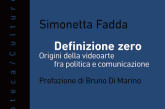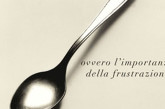
In una recensione di un libro sulla cultura video della metà degli anni Ottanta, il filosofo dei media Vilém Flusser offre alcune chiavi di lettura che, nonostante i quasi trent’anni trascorsi, conservano una straordinaria attualità tanto da poter costituire, ancora oggi, il punto di partenza per una teoria contemporanea del video. Nel suo breve testo Flusser osserva che, nonostante la popolarità acquisita dal medium, non si è ancora in grado di coglierne in pieno le virtualità soprattutto per la difficoltà di affrontarne l’analisi liberandosi del concetto tradizionale di ‘arte’. È inoltre impossibile cogliere le specificità del video se si continua a confonderlo e sovrapporlo con la televisione e i film – atteggiamento questo che è profondamente erroneo perché il video è da considerare, per tecnica e intenzioni, l’opposto di quei metodi di comunicazione: la televisione e i film sono basati sulla nozione di distribuzione dell’informazione, vi è quindi un mittente (il produttore televisivo o del film), ci sono ripetitori (schermi televisivi e sale cinematografiche) e ci sono milioni di destinatari del messaggio trasmesso; il video invece si basa sul concetto di elaborazione dell’informazione, vi è quindi un dialogo tra coloro che stringono una videocamera e coloro che sono mostrati sul nastro, ed è proprio questo dialogo che dà forma al messaggio finale. (…)

In a review for a book on the video culture of the mid-eighties, the media philosopher Vilém Flusser offers some interpretations that, despite being almost thirty years’ old , still retain extraordinary relevance, so much so that they can be used as a starting point for a contemporary theory of the video medium. In his brief text Flusser notes that, despite its popularity, the medium and its potential are not yet fully understood due to the difficulty in surpassing the traditional idea of ‘art’ when analysing video. It is also impossible to grasp the specificity of the video if it continues to confused and overlapped with television and film – an attitude that is deeply erroneous, because video is to be considered, in terms of technique and intentions, the opposite of those methods of communication: television and the films are based on the notion of distribution of information, thus there is a sender (the producer of the television or movie), there are repeaters (television screens and cinemas) and there are millions of recipients of the message; instead, video is based on the concept of elaborating information, there is thus a dialogue between those who hold the camera and those who are shown on the tape, and it is this dialogue that gives shape to the final message. (…)
Vito Campanelli
D’ARS year 54/nr 218/summer 2014 (abstract dell’articolo)
Acquista l’intero numero in formato epub/mobi oppure abbonati a D’ARS





